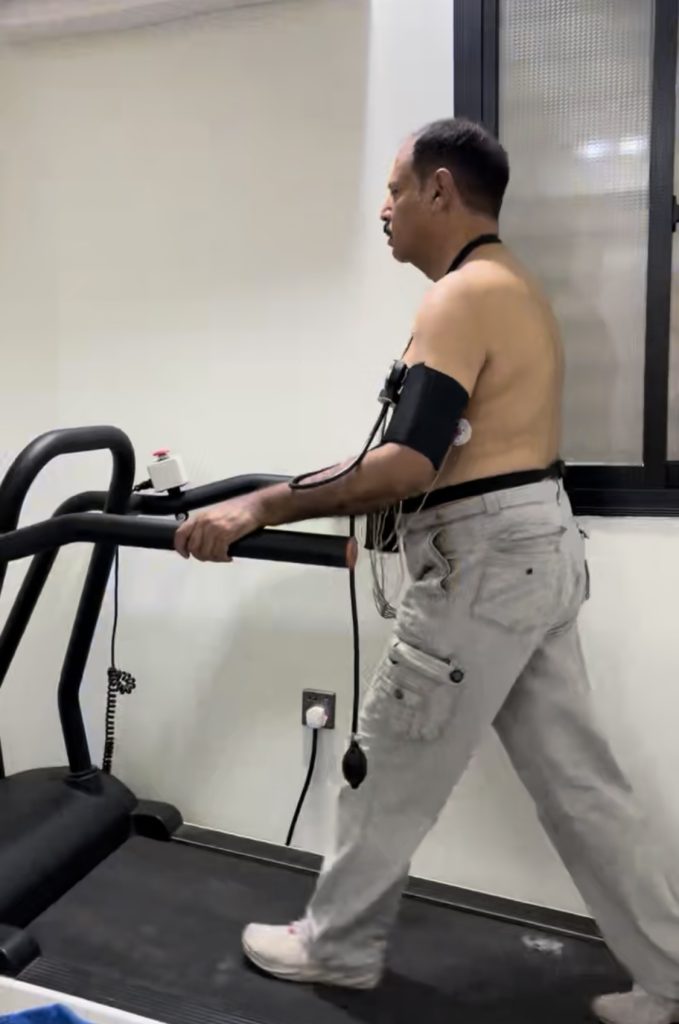Exercise Stress Test ETT Sialkot

Demystifying the Exercise Stress Test: Unveiling the Secrets of Cardiovascular Fitness
In the realm of modern medicine, diagnostic tests have become indispensable tools in identifying and managing various health conditions. One such test, known as the exercise stress test, has proven to be invaluable in assessing an individual’s cardiovascular health and overall fitness. This article will shed light on the purpose, procedure, and significance of the exercise stress test.
Purpose of the Exercise Stress Test Sialkot
The exercise stress test, also known as a stress ECG or treadmill test, serves several critical purposes in the field of cardiology and general health assessment. Its primary objectives include:
-
Detecting Cardiovascular Conditions: The stress test is primarily used to diagnose and evaluate heart conditions such as coronary artery disease (CAD), heart rhythm abnormalities (arrhythmias), and valvular heart diseases.
-
Risk Assessment: It helps healthcare professionals assess an individual’s risk of developing heart problems by revealing hidden issues that may only become apparent during physical exertion.
-
Treatment Evaluation: For individuals with known heart conditions, the test can gauge the effectiveness of treatment and guide adjustments to medication or intervention strategies.
-
Fitness Assessment: The exercise stress test can also be utilized to evaluate an individual’s overall fitness level, providing a baseline for exercise programs and lifestyle modifications.
The Procedure
The exercise stress test is a non-invasive procedure that is relatively straightforward and safe. Here’s an overview of the typical process:
-
Preparation: Before the test, patients are usually advised not to eat, drink, or smoke for a few hours to ensure accurate results. Comfortable clothing and appropriate footwear are recommended.
-
Monitoring: Electrodes are strategically placed on the chest, arms, and legs to continuously record the patient’s heart rate, blood pressure, and electrocardiogram (ECG or EKG) readings during the test.
-
Exercise: The patient is asked to walk or run on a treadmill. The speed and incline gradually increase to elevate the heart rate and induce physical exertion. The goal is to reach the target heart rate, which is calculated based on the patient’s age and fitness level.
-
Continuous Monitoring: Medical professionals closely observe the patient throughout the test, monitoring vital signs and recording any symptoms or changes in the EKG. If significant abnormalities, such as chest pain, shortness of breath, or an unsafe heart rhythm, occur, the test may be terminated.
-
Cool Down: After the exercise phase, the patient’s activity gradually reduces in intensity, and they eventually come to a complete stop. During this time, their heart rate and blood pressure are monitored to ensure a safe transition to the resting state.
Significance of the Exercise Stress Test Sialkot
The exercise stress test is a cornerstone of cardiovascular diagnostics and plays a pivotal role in early disease detection and management. Its significance lies in the following aspects:
-
Early Detection: By challenging the heart under controlled conditions, the stress test can uncover heart issues before they manifest during routine activities, enabling early intervention.
-
Tailored Treatment: For individuals with known heart conditions, the test helps healthcare providers create personalized treatment plans, making adjustments as needed.
-
Risk Stratification: The test results assist in assessing an individual’s risk of future cardiovascular events, facilitating preventive care.
-
Fitness Prescription: It aids in determining the appropriate exercise intensity and limits for individuals, promoting improved cardiovascular fitness.
Conclusion
The exercise stress test, with its ability to assess cardiovascular health, diagnose heart conditions, and formulate treatment and prevention strategies, stands as a testament to the importance of proactive healthcare. By safely subjecting the heart to stress in a controlled environment, this test provides invaluable insights into an individual’s cardiac function, emphasizing the significance of early intervention and personalized care in maintaining a healthy heart .
